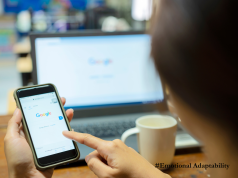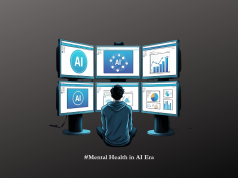In the heart of the city that never sleeps, the concept of an ‘always-on’ work culture is celebrated as a badge of honor. It’s the New York minute translated into work ethic – fast-paced, relentless, and ever-demanding. At The Work Times, much like our muse, The New York Times, we are attuned to the rhythm of the workplace, the worker, and the work itself. Yet, we are compelled to pause and ask, ‘At what cost does this always-on culture come, particularly to our mental well-being?’
As we wade deeper into the reality of our modern workforce, it becomes increasingly clear that the boundary between work and life is not just blurred but almost nonexistent. The hustle is glorified, the grind is celebrated, and the idea of overwork is often equated with success and commitment. However, this relentless pursuit of productivity is not without its consequences, and it’s high time we confront them.
The Mental Health Cost
———————-
The always-on work culture has ushered in an era where employees are constantly connected through technology. This ’round the clock’ availability has led to heightened levels of work-related stress, anxiety, and, most consequentially, burnout. It’s a mental health epidemic lurking in the guise of ambition. As deadlines loom and emails continue to ping after hours, the psychological toll mounts, and the space for recovery diminishes.
Moreover, the pressure to be perennially engaged in work activities can lead to a deterioration of personal relationships and exacerbate feelings of isolation. As such, productivity is no longer just about the output; it becomes a measure that could potentially break the workforce’s spirit.
A Balancing Act
—————
So, how do we navigate this complex terrain? It begins with redefining productivity. True productivity should encompass the well-being of the individual as much as it does their work output. It’s about working smarter, not longer. This calls for a paradigm shift in understanding that a well-rested, mentally healthy employee is more effective and efficient.
Companies now face the challenge of integrating this new definition into their cultures. This can be achieved through innovative policies that prioritize mental health, such as flexible hours, the promotion of mental health days, setting clear boundaries for availability, and creating work environments that encourage periodic disconnection.
Furthermore, workplace design can play a pivotal role. Spaces that offer quiet areas, recreational activities, or even simple changes like adding more natural light, can significantly improve employees’ mental state.
Individual Strategies
——————–
On the individual level, employees can take proactive steps to safeguard their mental health. This includes setting personal boundaries such as designating ‘tech-free’ times, engaging in regular physical activity to reduce stress, pursuing hobbies that provide a mental break from work, and practicing mindfulness or meditation.
The Path Forward
—————-
Redefining productivity is not just a fleeting trend; it’s an urgent necessity. As we collectively recognize the mental health cost of the always-on work culture, we begin to pave the way for a more sustainable, human-centric approach to work. By valuing mental health on the same level as productivity, we can foster an environment where success is measured not by hours worked but by the holistic well-being and satisfaction of the workforce.
Join us in this critical conversation at The Work Times, as we continue to explore and advocate for a work culture that respects the boundaries between professional success and personal health. Because after all, the true measure of a productive society is the happiness and wellness of its people.




























